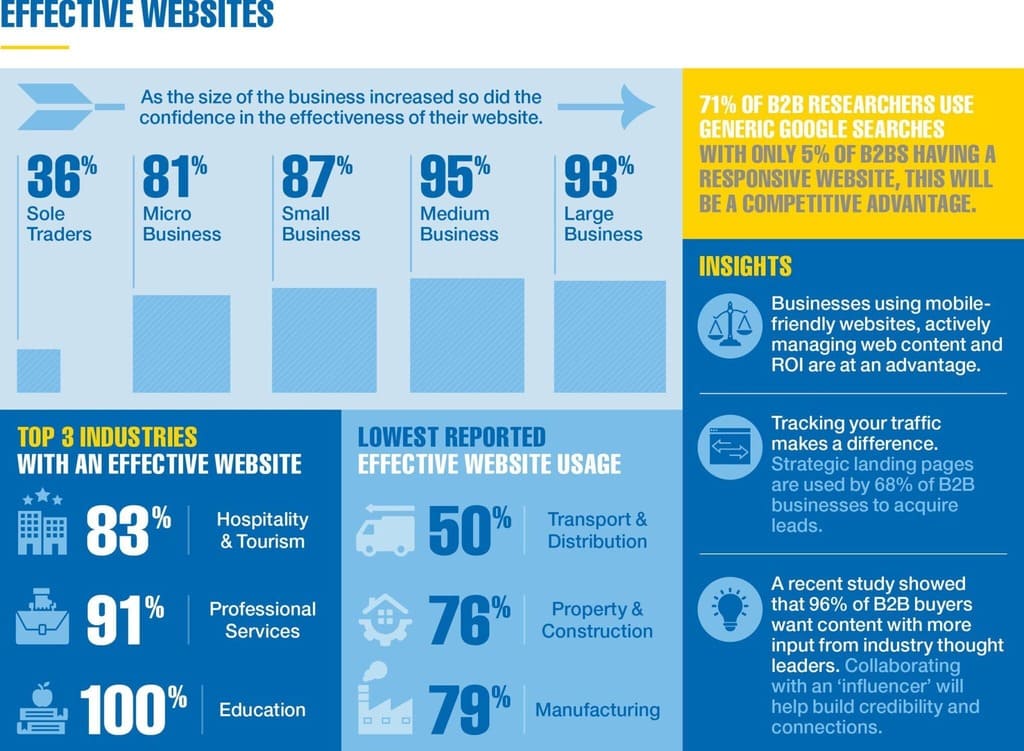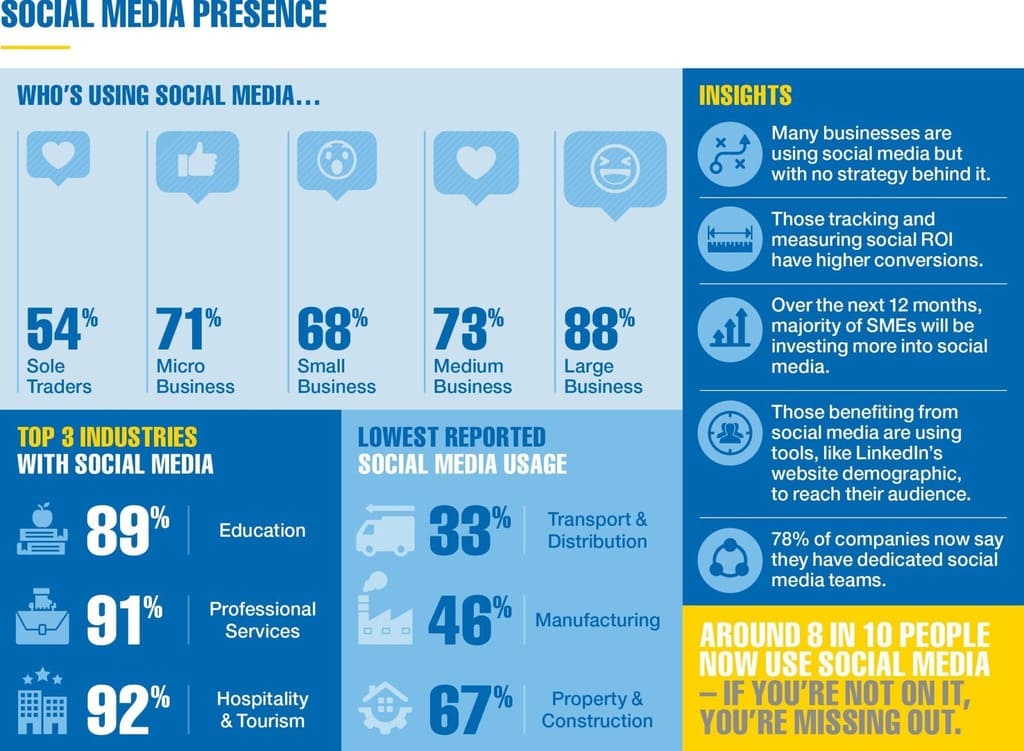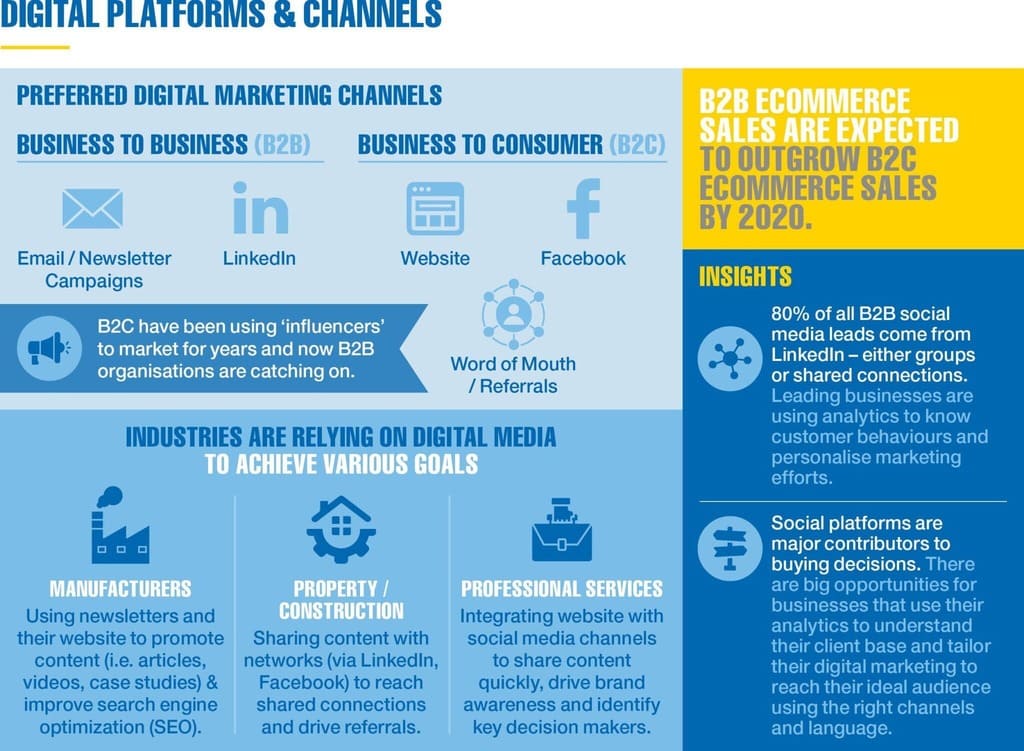Most B2B buyers perform 8-12 online searches before interacting with a vendor’s website and are already 57% of the way through the buying process before they speak to a sales representative. So how does your brand perform online?
Customers today expect to be able to go online and easily find information about your company as well as ways that they interact with you. In this edition of making Western Sydney Greater we asked businesses to share insights into how they are using and benefitting from having a digital media strategy. With millions of people around the world using the internet to conduct online research, social and digital media continues to be one of the fastest growing avenues for businesses to market and advertise, and connect with their customers.
In today’s digital world, being able to access information on a business or brand influences how someone feels about your services or products. Your business’ online existence is just as important as its physical existence.
A large part of the B2B buying process is completed online with websites being used as a tool to attract and convert buyers – like a virtual shop or warehouse. Even if you’re not selling products or services online, a business’s website is a place for people to research, seek out answers and look for ideas. Whether B2B or B2C, 70-80% of people research a company online before interacting with them. While a majority of businesses reported they have an effective website and relative success with social media, most are not utilising the tools to their full potential.
What’s holding businesses back? Although business owners understand that digital marketing can provide a range of benefits, many highlighted that they don’t have a defined strategy and are not effectively measuring ROI. Developing a digital strategy, choosing the right technology and platforms and having the expertise to make it work can require skills that sit outside the core competencies of most business owners. Lack of resourcing and in-house capabilities were the main reasons behind businesses feeling that they don’t have a strong social media presence. Large Businesses had a more positive position on ROI reporting (45% compared to SME Businesses at 18%), but given they have access to a broader workforce they may have the staff with the skills to manage these activities.
Without tracking the right metrics, you’re missing opportunities to attract new business and potentially investing time and money in inefficient ways. The majority of businesses would not make a capital investment in physical assets, or a major strategic business decision, without adequate planning and a process to measure the outcomes. A business’ digital strategy needs to be considered in the same way.
Over 48% of people select website design as the number one factor in deciding the credibility of a business. Once your page loads, users form an opinion in .05 seconds. There are significant opportunities for businesses who use effective analytics tool (i.e. Google Analytics and similar products), and those that seek external help to improve their digital capabilities. Businesses that use their digital data to understand buying and communication behaviours and identify the growth opportunities – both financially and operationally – will gain a competitive advantage.

Which industries are using social media
Buyers today expect businesses to have an up-to-date online footprint. According to Yellow Social Media Report, more than 50% of social media users say they are more likely to trust brands if they interact positively with customers on social media, make their content engaging and relevant, and keep it regularly updated. Having an online presence allows you to build the credibility of your business or brand by interacting and engaging with the world. Ultimately, people want their online relationship to have the same foundations as their offline relationship and know they can trust the business.
The survey results indicated the strongest use of social media in hospitality/tourism (91.66%) and professional services (90.06%). The retail and wholesale sector also rated high at 77.77%. Given that social media’s core role is as an online networking system this result isn’t surprising. Regardless of times zones and distances, it’s a channel that can be used to easily reach people instantly and at a low cost.
A recent study conducted by Hinge showed that more professional services firms use social media networking (39%) than use email marketing (36%). It also highlighted that firms are using social media to promote thought leadership (34%) about as frequently as event sponsorships (also 34%).
Property & construction (66.66%) and Manufacturing (45.83%) were two industries with lower usage of social media. Even with this low result, businesses recognised that social media is an important tool for expanding and remaining competitive.
The most common networks were LinkedIn and Facebook. These days, LinkedIn is one of the stronger B2B platforms connecting businesses, clients and suppliers to industries and creating new opportunities to foster collaboration and innovation.
Social media can initially appear more suited to a B2C scenario, or more personal/individual buying situations, however, it’s reported that B2B ecommerce sales are expected to outgrow B2C ecommerce sales by 2020, according to the latest HubSpot marketing statistics. The average B2B company is on 6 social media networks. Across any industry, a strong digital strategy can tailor the use of social media to target the customers (or those influencing and making the purchasing decisions) of a business. There appears to be a real opportunity for businesses in Western Sydney to gain a competitive advantage through enhanced use of social media to engage buyers.
In the latest Global Digital Report, Australians are currently ranked in the top quintile across all measures – 88% internet usage and 69% active social media users – with people spending around 5+ hours online daily (up 15 minutes since last year) and a large portion of that time (1.5 hours) is spent on social media. This suggests that those businesses leveraging a strong online presence will have an advantage. A typical customer or buyer experience is closely interwoven with a company’s online footprint. Given the wide-reaching opportunities of social media and the low costs, businesses can benefit if they use it as a sales tool to target customer segments.

Which numbers matter and why – the ROI of digital marketing
For any digital strategy using ROI is a great way to focus on the effectiveness of your campaigns and improve insights into your target markets. Unlike traditional marketing methods, online media can be easily measured to show the direct impact on your business leads and sales. Using real-time results, you also have the added flexibility to change or tweak any campaign or content immediately.
By tying in the activity-based metrics to the bottom line, you can bridge the gap from a soft activity to hard business revenue. By regularly monitoring key performance indicators (KPIs) it will help you accurately assess your ROI.
Some essential digital marketing KPIs
Our results told us that that the website is the most valued platform across any industry or business size. Some basic but valuable metrics you can measure for website engagement are:
- Number of unique visitors
- Number of return visitors
- Time spent on website
- Popular pages and how they found the page
- Number of people registering for an activity
These measurements tell you the breakdown of new customers versus repeat ones and what pages they’re interested in. Taking a look at your traffic sources will tell you what’s driving the most interest in your website and help you to focus your efforts in the right direction. The four most common traffic sources are: Organic Search (found through search engine), Referral (clicked on link from other websites or through social media), Direct (typed in your URL) and Paid/Campaign (through advertisements).
The more data you have, the easier it is to maximize your reach and get a better ROI. Make use of data analytics tools, like Google Analytics or similar programs, to collect relevant information on visitor’s activities and assess where the most traffic is coming from, so you can target those areas.
Depending on the goals of your digital strategy (i.e. newsletter sign up, purchases, increased awareness etc) you need KPIs to measure the conversions of your landing pages. Unlike your homepage, your landing page is action orientated and directs the user to take a specific action, such as downloading a document or adding reviews or testimonials. Prospects arrive at a landing page through a variety of sources – your social media activities, marketing emails, webinars or paid adverts like Google Adwords or similar services.
In 2019, it is estimated that there will be around 2.77 billion social network users around the globe, up from 2.46 billion in 2017. Social media is an essential part of today’s digital marketing strategy. There are a number of KPIs that can measure your social media activities and help to determine which platforms or campaigns create the highest conversion rates for your business. As an example, one metric is the ‘Cost per Click’ which is useful for finding out the price you pay for each click and which channels offer the most value.
When it comes to building a high converting digital marketing strategy, there’s no one-size-fits-all. You need to select the right metrics for your goals and prioritise the platforms that work best for your business and your audience.

2018 Report Highlights
Business Sentiment
Reaching its highest point over the survey’s history, businesses across Western Sydney are buoyant.
Economic Performance
Businesses expect a strong economic environment and forecast exceeding their budgeted revenue, profit and capital expenditure targets.
Employment Trends
55% of businesses are expecting to increase their full-time workforce over the next 12 months.
Transport
The bold vision to make Western Sydney a 30-minute city will be a game-changer for liveability. Businesses are gearing up to leverage the opportunities from improved connectivity.
















